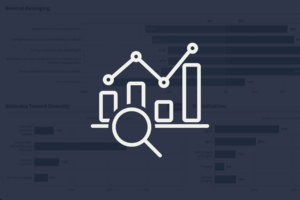This article is the final piece in a 3-part series on motherhood in the pandemic. The first part is available here.
What Policymakers Owe to Working Mothers
In the second part of this article series, we dug into the uneven distribution of unpaid domestic labor between mothers and fathers. Now, let’s talk about what we can do to move forward.
If we want to make sure that the vast responsibilities of childcare, elder care, and unpaid domestic work don’t automatically fall to women, America needs a stronger social safety net. Meager federal and local work policies that offer no guaranteed paid family or medical leave create a significant disadvantage for working mothers, who most often assume the caregiving burden in addition to their own professional work responsibilities.
Yes, motherhood is a choice, but for working mothers — right now in this pandemic — that choice has already been made and embraced with a certain expectation for what social support they could rely on: schools, daycares, jobs, camps, community programs, neighbors, family members, the list goes on and on. However, most working mothers were not given a choice about whether or not to keep their jobs, were not given a choice about whether or not to supervise virtual school, and were not given a choice about whether or not to rely on daycare. In fact, many mothers had to care for their toddlers from home while still paying tuition to closed daycares and private schools in order to retain their child’s spot on the roster.
Although the Families First Coronavirus Response Act (FFCRA) and Coronavirus Aid, Relief, and Economic Security (CARES) Act provided important starting places for businesses with less than 500 employees to extend paid sick and caregiving leave to workers during the height of the pandemic, big businesses and their employees were left out of the equation altogether.
Our country needs federal policies that support working mothers through a national child care infrastructure that provides access to universal or low-cost childcare solutions. We need paid family and medical leave policies that allow us to be mothers and to work without having to choose between having a job and having a family.
The inaction of federal policymakers, who are disproportionately men, to identify affordable childcare solutions has created a macroeconomic problem that places a burden on families to finance the under-resourced childcare system and results in a market-based issue, rife with inequity and ineffectiveness. Moreover, the notion of childcare responsibility has been internalized by many Americans and women — the result of a lack of federal policy and action — as a personal problem or even a personal failure on the part of working mothers.
Instead of blaming working mothers, federal lawmakers should work to mitigate the current economic crisis by investing in the childcare industry, creating equitable access to affordable childcare for all Americans, and folding childcare into job-creation plans. All working families need access to paid family and medical leave that allows them to care for a child or sick loved one, or even recover their own health without missing a paycheck or losing their job. Key policymakers should prioritize the experiences of mothers — the social backbone of most societies — when drafting federal policies and should focus our nation’s economic recovery on women. It seems simplistic to say, but after all, in order for our economy to fully recover and eventually thrive, women must be able to fully participate in the workforce.
Working mothers are essential workers, no doubt . . .
What is being asked of working mothers during the pandemic is practically impossible. But can you imagine a year — or a day — without them? I know I can’t.
By 8 pm each night, “go to bed, Logan” is usually all I can muster, after a grueling day spent balancing my professional work life, childcare, and unpaid domestic labor during the pandemic.
My 2 year-old daughter’s puppy dog eyes are no match for my exhaustion though. Every night, she fights having to clean up her room and get ready for bed, hoping she can stay up just another half hour, while I’m fighting just to keep my eyes open.
But the reality is, I’ll be up for several more hours, long after both my kids are asleep… still working.
This article is the final piece in a 3-part series on motherhood in the pandemic. The first part is available here, and the second part here. “A Year Without Sleep” was written by TDM consultant and data scientist Oriana Leach. To learn more about what your business can do to celebrate Women’s History Month and support working mothers within your organization, download our free Women’s History Month Programming Guide.














